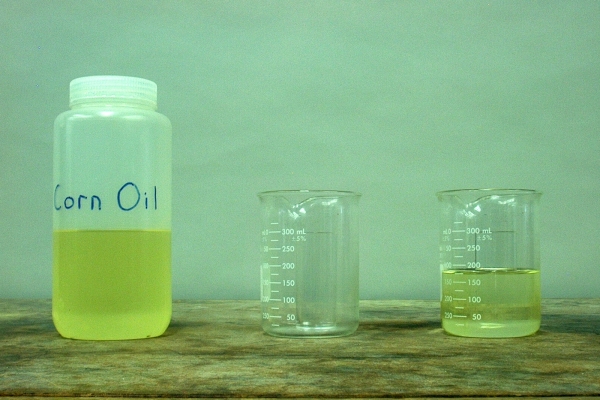
(Thanks to Georgios Koutroulakis for requesting this demonstration.)

(Thanks to Georgios Koutroulakis for requesting this demonstration.)
Place the acrylic cylinder in the beaker (middle). You (and the class) can see the outline of the entire cylinder. Now pour corn oil into the beaker (right). The portion of the cylinder submerged in the corn oil is now invisible. (You can pour in enough corn oil to submerge the cylinder completely, if you wish, rendering the whole cylinder invisible.)
When light passes from one medium into another medium that has a different index of refraction from that of the first, it is reflected, refracted or both, depending on the angle at which it approaches the interface, and on the relative indices of refraction of the two media. (See demonstration 80.18 – Refraction tank.) If, however, the indices of refraction of the two media are equal, the light passes through the interface undisturbed; it is as if the light is passing through one medium. Acrylic has a significantly higher index than does air, so we can fairly easily see the edges of an acrylic cylinder, an air-acrylic or acrylic-air interface. Corn oil has an index of refraction (1.47-1.48) that is very nearly equal to that of acrylic (1.495). Thus, when we fill the area around the cylinder with corn oil, light passes through the corn oil and acrylic as if they were one material, and any refractions or reflections we observe when the cylinder is surrounded by air, disappear, and the cylinder becomes invisible. If the corn oil were colorless, as the cylinder is, the effect would be perfect. Despite the slight yellow color of the corn oil, however, the effect is nearly so, and is quite dramatic.